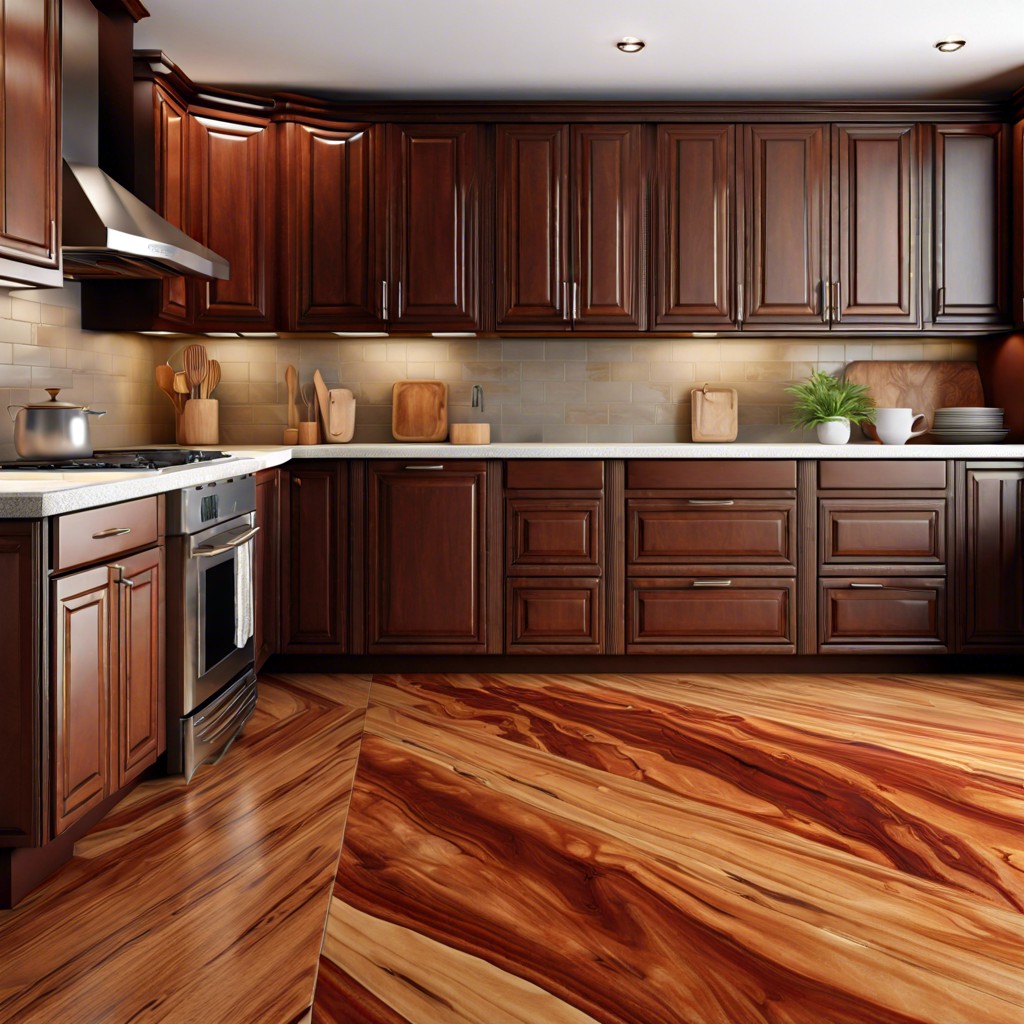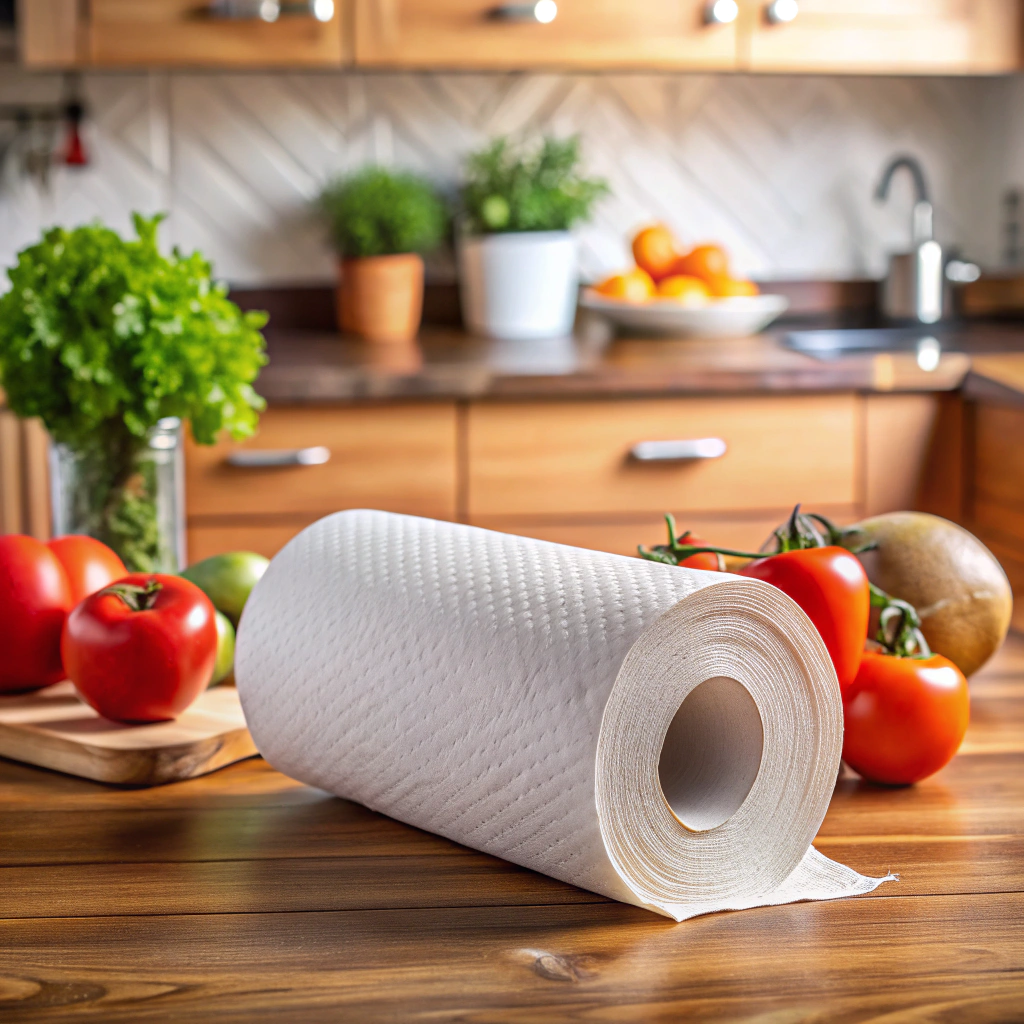Last updated on
Learn how to clean and restore your stained countertops with these easy and effective tips.
Got a countertop that looks like it’s taken a few too many spills? Whether it’s wine, coffee, or that mysterious purple splotch, don’t sweat it. First, let’s figure out what kind of surface you’re dealing with. Armed with the right cleaners, a bit of baking soda, and some good old-fashioned elbow grease, you’ll have that countertop sparkling in no time. Stick around, and we’ll walk you through every step, from testing cleaning products to protecting against future disasters. Ready? Let’s get those countertops back to their former glory!
Key takeaways:
- Identify countertop material for tailored cleaning methods.
- Use gentle cleaners, avoid abrasive tools for initial cleaning.
- Test cleaning products in hidden area before full use.
- Apply baking soda paste for tough stains, repeat if needed.
- Try vinegar or nail polish remover for stubborn stains.
What's Inside
Identify the Countertop Material

Marble, granite, quartz, laminate, or butcher block – each has its quirks. Knowing your countertop material is like knowing your kids’ food allergies; crucial for avoiding disasters.
For marble, think delicate diva. It’s porous, so it absorbs stains faster than you can say “red wine.” Granite is tougher but still needs some TLC.
Quartz countertops are the low-maintenance friend – stain-resistant but not stain-proof. Laminate is budget-friendly but can be a bit high-maintenance when it comes to stains. Butcher block? Rustic charm but prone to soaking up spills.
Identifying the material helps tailor cleaning methods, ensuring you don’t turn a molehill of a stain into a mountain of regret.
Use Gentle Cleaners for Initial Cleaning
Commercial kitchen cleaners or a simple mix of warm water and dish soap can work wonders. Use a soft cloth or sponge to gently scrub the surface. No need to channel your inner Hulk – gentle is the key here. Most stains aren’t as stubborn as they pretend to be.
If you’re dealing with dried-on gunk, let the soapy water sit for a few minutes. It helps to loosen the grip of those pesky stains. Remember, avoid the temptation to use steel wool or abrasive scrubbers. Those will do more harm than good, like using a chainsaw to trim your hedges. Stick with the soft stuff. Your countertops will thank you.
Test Cleaning Products in an Inconspicuous Area
This might just be the most important step you’ll ever take to save your countertop from looking like a Jackson Pollock painting gone wrong! Before you make that mystery stain disappear, pick a spot that’s hidden from view, like under the toaster or behind the coffee maker.
Apply a small amount of the cleaner and let it sit for a bit. Patience is key—channel your inner zen master and give it a few minutes.
Check for any weird reactions. Discoloration, scratching, or any form of countertop drama means this product is a no-go. If it passes the test, you’re in the clear to go full steam ahead on that pesky stain. Happy cleaning!
Apply a Baking Soda Paste to the Stain
Here’s when things start to get a bit… science-y. Mix equal parts baking soda and water to form a paste. Sounds like making a kiddie craft, right? This miraculous mixture works wonders on stains because baking soda is mildly abrasive and has a natural lifting quality—kind of like the personal trainer of cleaning agents.
First, spread the paste over the stain and gently rub it in. Not too hard, we’re not sanding wood here! Leave it there for about 10-15 minutes. Patience is key; it’s doing its magic.
After the wait, wipe the paste away with a damp cloth. Voila! Stain, be gone. If the stain is stubborn, repeat the process a couple more times. It’s like rinsing and repeating—but less sudsy, more sparkly.
Always test in a small, hidden area first, just to be sure your countertop isn’t one of those rare types that resents baking soda.
Use Specific Cleaners for Different Materials (e.g., Marble, Granite)
Marble and granite countertops often require special care, but cleaning them doesn’t have to be rocket science. For marble, avoid acidic cleaners like vinegar or lemon juice. Stick to a pH-neutral cleaner, or simply mix a little dish soap with water.
Granite? It loves a warm, soapy bath too. Dish soap and water are your friends here as well. Just make sure to rinse thoroughly and dry afterwards. For deeper cleaning, a specific granite cleaner can be your go-to choice.
A key point: always use a soft cloth to avoid scratching the surface. And remember, what works wonders on marble might not be great for granite. Keep them happy by using the right products for each type.
Try Vinegar for Tough Stains
When you’ve got a stain that’s giving you the stinky eye, why not fight fire with fire—sort of? Vinegar’s acidic nature makes it a powerhouse for tackling stubborn stains.
First, mix equal parts water and white vinegar in a spray bottle. If your countertop could talk, it might just say, “Ah, refreshing!” Spray the solution liberally over the stain and let it sit for a few minutes. This allows the vinegar to break down whatever gooey gunk has taken up residence on your pristine surface.
For those extra-stubborn spots, you can level up. Soak a clean cloth in undiluted vinegar and lay it over the stain for approximately 15 minutes. Imaging the cloth as a superhero cape might make the wait more enjoyable.
Finally, give your countertop a good wipe-down with a microfiber cloth. Watch the stain retreat faster than a cake in front of a dieter. You may need to rinse with water afterward to get rid of the vinegar smell, unless you enjoy your kitchen smelling like an Italian deli.
Rub Off Stains With Nail Polish Remover
Nail polish remover isn’t just for your fingers. It’s a secret weapon against stubborn stains. The acetone in nail polish remover can break down tough spots.
First, dab some remover onto a cotton ball or soft cloth. Gently rub the stained area—no need to scrub like you’re sanding a deck. You’ll see the stain start to lift.
But be careful. Acetone might be too harsh for some materials. Always test a tiny hidden area first to avoid any unwelcome surprises. If all looks good, proceed with confidence.
Once the stain is gone, wipe the area with a damp cloth to remove any leftover acetone. It helps avoid any damage to the countertop.
Avoid Abrasive Tools and Harsh Chemicals
Using abrasive tools or harsh chemicals? Big mistake. You’ll scratch the surface or even discolor it. Stick to soft sponges and cloths. Better yet, microfiber. They’re gentle but effective.
Harsh chemicals? Think twice. They don’t just damage stains; they can break down sealants and finishes. Your sparkling countertop? Not so sparkly anymore.
For stubborn stains, patience is your friend. Let cleaners sit for a few minutes. Work smarter, not harder. Avoid steel wool and scouring pads like a last-year’s fruitcake. Tempting, yes. Smart, no.
Save those harsh chemicals for something less delicate. Your countertops will thank you.
Wipe With a Microfiber Cloth
Microfiber cloths are your countertops’ best friend. They’re soft, absorbent, and gentle on surfaces, preventing scratches or further damage. Plus, they pick up dirt and grime like a charm.
Always dampen the cloth slightly with water before wiping; this helps in trapping dust and avoiding streaks. Work in small sections for the best results, ensuring you cover every inch.
If there are stubborn spots, use some elbow grease, but refrain from harsh scrubbing. Your goal is a clean, smooth surface without compromising the material. Microfiber magic, who knew?
Protect Against Future Stains
Keep spills at bay. Wipe up any messes as soon as they happen. Letting liquids sit is a recipe for disaster.
Use coasters and trivets. They aren’t just for decoration. These little guys can save your countertop from hot pans and sweaty glasses.
Seal natural stone. If you have granite or marble, consider sealing it annually. This acts like an invisible shield, making it harder for stains to set in.
Avoid harsh cleaners. Stick to mild dish soap and water for everyday cleaning. Strong chemicals can damage the surface and make stains more likely to stick.
Adopt a cutting board. Trust me, your countertop will thank you. Plus, it keeps those knife blades sharper.
With just a few simple changes, keeping countertops pristine is a breeze. Happy cleaning and happy kitchen vibes!




